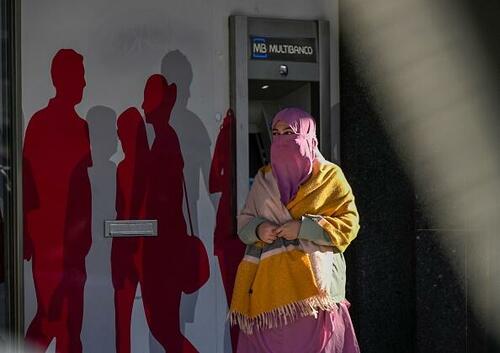The incredible story of the ex-satanist St. Bartolo Longo canonized by Pope Leo XIV – LifeSite

Wed Oct 22, 2025 – 1:45 am EDTWed Oct 22, 2025 – 1:44 am EDT
(LifeSiteNews) — The ex-satanist St. Bartolo Longo was canonized by Pope Leo XIV on Sunday, along with six other beatified men and women.
Longo is a particularly fitting saint for our times, when witchcraft and interest in the occult is surging, as it was when Longo was a young man in Italy in the 1860s. While he was born into a devout Catholic family, Longo was influenced by the anti-Catholic milieu of the University of Naples, where he studied law, which reflected larger cultural, political changes in Italy.
The movement to unify Italian states at the time was shaped by anti-Catholic Freemasons who were passionately anti-clerical and wished to abolish the papacy, such as General Giuseppe Garibaldi and Giuseppe Mazzini. Longo’s professors were likewise anti-Catholic and passed on their secular ideology to students at the University of Naples, including Longo.
Occultism and spiritualism were also growing in popularity. Many students demonstrated publicly against the pope, consulted Neapolitan mediums, and dabbled in witchcraft. Bartolo went a step further: he became a satanic “priest.” He has told how during his “ordination” ceremony, he gave his soul to a “spirit,” a demon, which manifested in “blasphemous shrieks” and shook the walls.
Bartolo dedicated himself to the satanic cause, publicly belittling the Catholic faith and even convincing others to leave the Catholic Church to join the occult. But his new life came with torments. He suffered from depression, paranoia, and anxiety and showed signs of diabolical obsession, including demonic visions.
Bartolo eventually suffered a mental breakdown. At rock bottom, he heard the voice of his deceased father urging him to “Return to God! Return to God!” Longo sought help from a professor friend from his home town, who helped convince him to renounce satanism and introduced him to a Dominican priest, Father Alberto Radente, who heard his confession.
Longo became a Third Order Dominican in 1871, as part of reparation for his past sins. In the fervor of his new commitment, Longo attended a seance where he stood and raised a medal of the Blessed Mother and declared, “I renounce spiritism because it is nothing but a maze of error and falsehood.”

His travels to Pompeii, where he practiced law, left a deep impression on him. He was astonished by the pervasive lack of faith and superstition of the people. “Their religion was a mixture of superstition and popular tradition, rather than a real and true cult of God,” he wrote. “For their every need, even the basest, they would go to a witch, a sorceress, in order to obtain charms and witchcraft.”
Around this time, when he was beset with despair over his past life, he was inspired with a mission that he knew would help ensure his own salvation, repair his past, save other souls, and give his life a deep purpose.
Years later he recounted:
As I pondered over my condition, I experienced a deep sense of despair and almost committed suicide. Then I heard an echo in my ear of the voice of Friar Alberto repeating the words of the Blessed Virgin Mary: “If you seek salvation, promulgate the Rosary. This is Mary’s own promise.” These words illumined my soul. I went on my knees. “If it is true … I will not leave this valley until I have propagated your Rosary,” he promised the Blessed Virgin.
With the help of Countess Mariana di Fusco, Longo created a confraternity of the Rosary and restored a rundown church in Pompeii, to help nourish the starving souls there.
He sponsored a festival in honor of Our Lady of the Rosary and acquired a painting of Our Lady of the Rosary which was not just “worm-eaten,” but artistically subpar, to Longo’s distaste. He had the painting renovated and placed in the church, and “within hours” of its installation began many miracles attributed to prayer before the painting.

In one such miracle, a young girl from Naples, Fortuna Agrelli, was cured from a painful, incurable disease not understood by her doctors. After beginning a novena of Rosaries for her cure, Our Lady appeared to the girl as Our Lady of Pompeii, sitting on a throne, with the Child Jesus on Her lap and holding a rosary.
Fortuna asked Her as “Queen of the Rosary” to be healed, and the Blessed Mother told her to make three novenas of the Rosary to obtain all she asked for. The girl did, and was cured. Mary afterward appeared to her saying; “Whosoever desires to obtain favors from Me should make three novenas of the prayers of the Rosary in petition and three novenas in thanksgiving.”
Bartolo devoted himself to evangelization and catechesis, writing many books and pamphlets and giving conferences on Christ and the Blessed Mother. He also founded charitable institutions in Pompeii, including an orphanage, trade school, and congregation of sisters.
He went on to construct a larger church in 1876, which in 1939 was expanded to a basilica and is known now as the Shrine of the Virgin of the Rosary of Pompeii. Annually on the feast of Our Lady of Pompeii, Italians still flock to the shrine.


Bartolo sparked a widespread devotion to the Rosary that spread throughout Italy and beyond and helped snuff out occult practice in the Naples region.
On his deathbed, he prayed the Rosary with orphans he had helped educate. His last words were, “My only desire is to see Mary, who has saved me and who will save me from the clutches of satan.”
Longo’s cause for canonization was opened in 1947, and in 1980, he was beatified by Pope John Paul II, who called him the “Apostle of the Rosary.” The ordinary session of the cardinals and bishops of the Dicastery for the Causes of Saints voted for Longo to be canonized, and the vote was approved by Pope Francis in February of 2025.
Leo on Sunday also canonized “a lay catechist from Papua New Guinea, an archbishop killed in the Armenian genocide, a Venezuelan ‘doctor of the poor’ and three nuns who dedicated their lives to the poor and sick,” CBS News reported.
Recent Top Stories
Sorry, we couldn't find any posts. Please try a different search.










